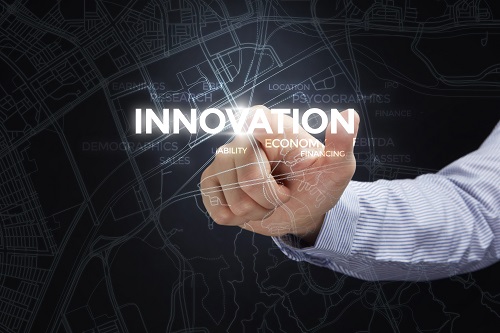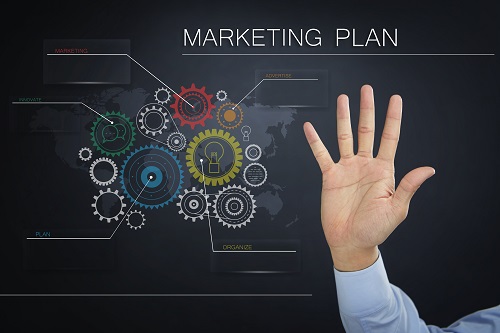
Examples of Innovation in E-commerce: Convenience Wins in a Cashless Society
20 years ago, all shopping was done in-store. Everyone was paid with either cash or a physical cheque that took several days to clear. Nowadays, everything is digital.
E-commerce is the term for all monetary transactions and exchanges that take place over the Internet. Its greatest advantage is convenience. Thanks to the e-commerce platform, we can shop at our favourite stores and even manage our finances all without getting out of bed.
In many aspects, managing your funds electronically is more secure than physical alternatives. If you lose your wallet, that’s a wrap — you can kiss any cash you had in it goodbye. But the money in your bank account is safe. You may lose your debit card, but a quick phone call to your bank can mitigate any financial damages.
The e-commerce market is quickly becoming one of the largest industries worldwide — and with giants like Amazon and Overstock offering everything from toiletries to electronics, how could it not? People will pay for convenience. Why spend hours visiting different stores and comparing products when it only takes 30 seconds to search online?
Due to its popularity, every e-commerce company is constantly looking for ways to streamline transactions and improve customer experience. Let’s countdown the top 5 examples of financial innovation in the e-commerce market that are helping online retailers maximise potential, reach more customers and become part of the rapidly growing global e-commerce platform:
5. Electronic Funds Transference
In short, electronic funds transference (EFT) is simply moving money from one account to another. It’s fast, convenient, secure and the foundation of all e-commerce. Without it, we wouldn’t have many of our modern conveniences — like online shopping.
One of the most prominent forms of EFT is direct deposit. Though some people prefer physical cheques, direct deposit is undoubtedly superior. Let’s look at some of its advantages.
Since cheques are delivered by mail, they’re subject to delays. Late shipments, storms, floods, blizzards — any of these can result in you getting your pay cheque later than you’re supposed to.
Delayed pay cheques lead to delayed deposits, which may cause you to be late in paying your bills. With most companies charging late fees, that’s extra money you have to put out — all because your cheque was late.
If your payday coincides with your day off, would you rather have to get up and go pick up your cheque or rest easily, knowing it will have been automatically deposited by the time you wake up? Not only does it save time and energy, direct deposit guarantees you’ll get paid on time.
4. Person-to-Person (P2P) Payments
Need your roommate to grab something from the shop? Owe your friend for last night’s dinner? The development of EFT has led to person-to-person payment services, allowing you to instantly exchange funds with your friends and family.
Most banking apps have electronic transfer services that allow you to send money to one of your contacts. For example, I use Chase QuickPay. These services are great — as long as the recipient has an account with the same bank, the transfer is completed within seconds.
If you’d rather not go through a bank, services like PayPal and Venmo are viable options. Even social media platforms are starting to implement P2P features. Both Facebook and Snapchat allow users to send money to their friends, as long as both parties have linked debit cards to their accounts.
Sure, being able to send money to your friends is convenient. However, P2P services also offer the rarely-recognised advantage of conflict resolution.
Most monetary disputes come down to a lack of accountability. One person owing someone else money can quickly devolve into a case of he-said-she-said. It’s not always intentional either — let’s say your friend slides you the £20 he owes you from the other day. How easy would it be to slide it in your pocket and forget it ever happened? With the transaction history offered by any of the P2P service providers, you have concrete evidence of all payments made (or lack thereof).
3. Apple Pay
Online shopping can be tedious for customers, particularly in having to submit the same information every time you make a purchase. Apple Pay is a financial innovation in mobile commerce that allows you to skip this process. After linking your credit card to your Wallet and updating your billing and shipping addresses, you’ll be able to make purchases with a single tap on accommodating websites and apps.
The easier it is to make a purchase, the more likely we are to do so. By streamlining your transactions, Apple Pay saves consumers time and effort while benefiting corporations by boosting sales.
Say you’re on your way to work and you stop for a cup of coffee. After waiting in line for 20 minutes, you get to the register, place your order and… you left your wallet in the car. Normally, this would be frustrating but, thanks to Apple Pay, you can pay with your iPhone. Everyone carries their mobile with them nowadays and, by offering a way to pay with it, Apple Pay ensures you’ll always have access to your funds.
2. Drones
As we’ve already stated, people are willing to pay for convenience. What’s more convenient than quick, reliable shipping?
Several e-commerce companies are looking into drones as the next big thing in delivery. Amazon already has plans to incorporate drones into their system with Amazon Prime Air: a service designed to deliver packages under 5 pounds to their recipients in 30 minutes or less.
Though it’s still in its beginning stages, the use of shipment drones seems promising — quick and accurate with no chance of human error.
1. Targeted Advertising
Targeted advertising is the biggest innovation in the e-commerce industry. By using modern tracking technologies to monitor an individual’s online activity, marketers can tailor ads to their assumed tastes.
While morally controversial, there’s no denying its efficacy. However, targeted advertising is only effective when done properly. Keeping track of the products I view and showing them to me later isn’t going to make me more likely to buy it. If I really wanted it, I’d have bought it the first time.
The key to successfully increasing consumption is subtlety. A recent Harvard study found that targeted advertising can influence a person’s self-perception of a business or product, but only when “participants saw the targeted ad as reflective of their own characteristics”. To put it simply, when someone is presented with an ad they believe is based on their own tastes, it can affect the way they see themselves. With this new perspective, they’re more likely to buy products that exemplify these perceived traits.
The study stresses the significance of awareness. For an ad to influence self-perception, the viewer must already believe that it was based on their own online activity. If marketers can find a way to capitalise on the results of this study, it could have an exponential effect on product consumption for so many businesses.
Each of the innovations listed above has had (or will have) a profound effect on e-commerce. Aside from targeted advertising (which is more about marketing than customer experience), each innovation focuses on convenience — suggesting that convenience plays a key role in a service’s appeal to consumers.






